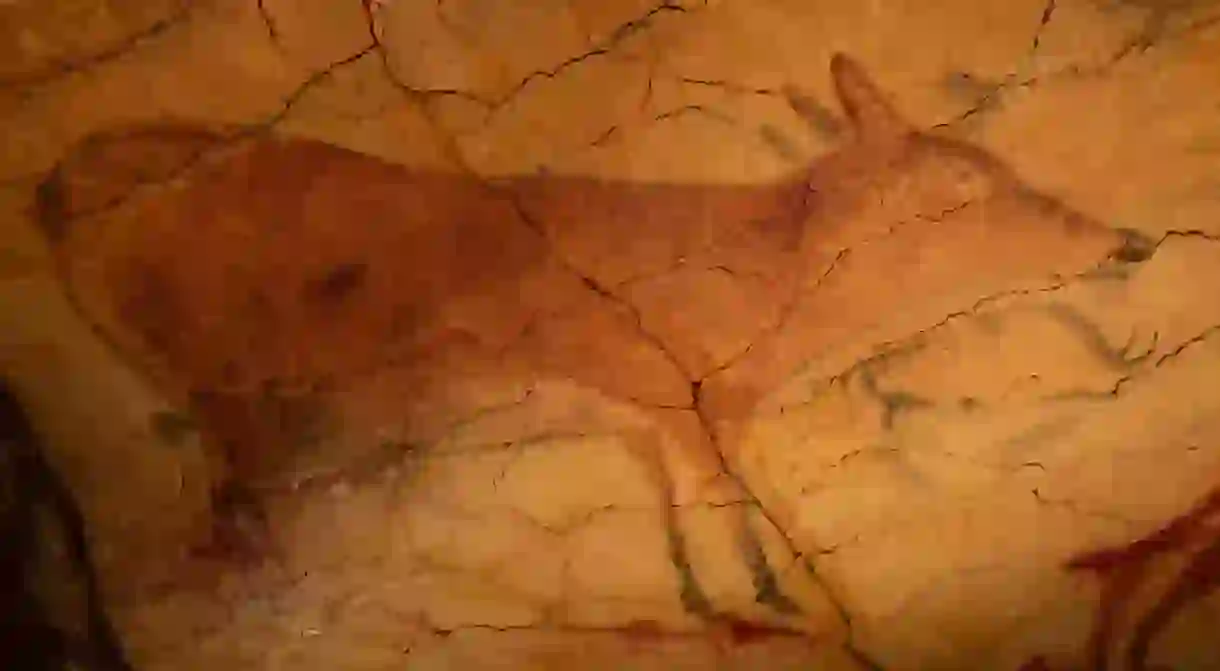The Most Magnificent Cave Art to View in Northern Spain

Not many know, but northern Spain, particularly Asturias and Cantabria, is home to some of the best examples of Palaeolithic cave art in the world. These caves have been inscribed as UNESCO World Heritage Sites because of their importance and date from 35,000 to 11,000 B.C. Here are some of the most magnificent places to view cave art in Northern Spain.
El Castillo and Las Monedas, Puente Viesgo
El Castillo is part of the Monte Castillo caves in Puente Viesgo, Cantabria. Two of these caves are open to the public: El Castillo and Las Monedas. El Castillo was discovered by H. Alcalde del Río in 1903 and features Palaeolithic cave art such as horses, bison, doe, stags, goats, a mammoth and also a few human figures. Visit the caves with a guide on one of these Puente Viesgo tours.
Hornos de la Peña, Tarriba
Located near the mall town of Tarriba in central Cantabria, Hornos de la Peña is a huge open cave system, which was home to some of the last Neanderthals and some of the first Homo sapiens. It features one of the most complete series of engravings in the Cantabrian region, consisting of horses, bison, goats, a stag, and a snake. One of the most striking pieces, however, is that of an anthropomorph (half animal-half human). They are thought to date back to around 13,000 B.C.
El Pendo
El Pendo is located in the Camargo Valley in Cantabria, close to the village of Escobedo. It was discovered 1878 by Marcelino Sanz de Sautuola, but the most important discovery inside the cave wasn’t until 1997, when they found a panel of red paintings or ‘Painting Frieze’. The frieze is a 25-metre-long panel featuring 20 figures painted in red, and accompanied by a goat, a horse and various patterns. It is thought to date back to 20,000 B.C.
Altamira, Santillana del Mar
The Cave of Altamira is probably one of the most famous pieces of cave art in the whole of Spain. It’s located 2.5km southwest of the picturesque town of Santillana del Mar, and was first discovered in 1879. It features a variety of crimson and ochre colour paintings, of which the bison (below) is the most iconic. Due to its popularity, the cave had to close in 2002, but visitors can still see replicas of the art in the attached museum. The paintings here date back 13,000 to 35,000 years ago.

Covalanas
Covalanas is located in the town of Ramales de la Victoria and was inhabited for around 45,000 years. It’s a small cave attached to another, with two galleries featuring both animal forms and figures, as well as small dots and lines. The art here is estimated to date back to 20,000 B.C.
Cueva Chufín, Riclones
The Moro Chufín Cave can be found in a picturesque spot close to the Nansa River valley. It’s a vast, expansive cave that was inhabited around 15,500 B.C. Most of the art here is grouped together in one panel and includes bison, patterns and something which resembles a fish.
Tito Bustillo, Ribadesella
Tito Bustillo Cave is one of the most important Palaeolithic cave art sites in the world. The main panel room is the only one that can be visited in the cave, and is the most outstanding, too. There are about 100 animals and figures represented here, including 30 deer, 13 horses, nine reindeer, five goats, and four bison. The oldest parts date to 20,000 B.C., while others date from 17,000–12,000 B.C. There is also an interpretation centre to visit nearby.
El Pindal, Pimiango
The El Pindal Cave is located at the mouth of the River Cares-Deva, in Eastern Asturias. It measures a total of 600 metres, but only the first 300 metres can be explored. Inside, there are five areas with artistic representations of deer, horses and bison, as well as interesting fish and mammoth drawings not found in many of the other caves. It is thought these paintings were done by the Magdalenian culture from around 13,000 to 18,000 years ago.













